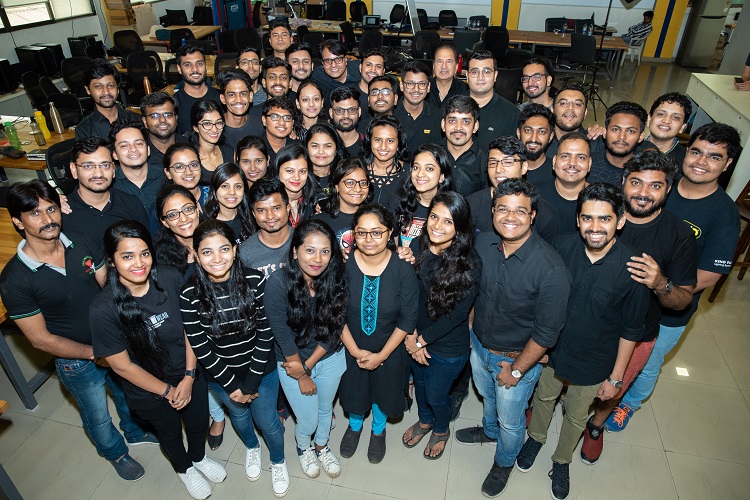The founder of an open analytics platform – DNIF, talks about threat hunting and its importance of its practical use in countering cyber threats.

Shomiron Dasgupta founded DNIF in 2016 with a vision to create a company that delivers high-quality attack detection products and services to its customers.
Combining his skill set as an intrusion analyst with a passion for tech advancements, Shomiron has been building threat detection systems for close to two decades. Today, DNIF has established partners in 14 countries across industries such as healthcare, insurance, transportation, banking and media.
Prior to founding DNIF, Shomiron worked with ICICI Infotech Ltd. as a senior consultant, where his core responsibility was to solve critical challenges faced by customers.
Shomiron, is also an eminent speaker at many industry events. The events and venues that have hosted him include TedX, DSCI (the Data Security Council of India) and SACON (the Security Architecture Conference). He is an alumnus of St. Xavier’s College.

Outside the tech world, Shomiron is also a trained mountaineer, with expedition experience in the high Himalayas.
We are publishing an interview with Mr. Shomiron:
Q.: What is the problem you are trying to solve?
Ans: The initial idea behind a SIEM platform was to solve the problem of connecting different network security devices, make them speak the same language and help security analysts see the bigger picture when it came to protecting their network environments. Then came the issues of a single SIEM product connecting to so many devices, collecting and decoding their information, and deciphering the possible threats to the environment. Collecting terabytes of log information, at least for a traditional SIEM, has become almost impossible. This has a negative impact on the speed of detecting threats, and speed was one of the key considerations SIEM platforms were built for.
In steps DNIF: DNIF is a first-of-its-kind, next-gen SIEM solution with advanced security analytics and response automation. It’s built on a big data analytics platform for real-time threat detection and response. It provides SOAR, UEBA, security analytics, threat hunting and security data lake solutions on a single platform to promote process efficiency, manageability and reduced risks.
DNIF solves the age-old problem of combining large-scale data collection and real-time analytics with a single-pane view for an entire network security infrastructure, security automation and response.
Q.: Can you share with us any insights that led you to believe that this is a big enough problem?
Ans: Not having a clear picture of what’s going on in your network infrastructure is more than just a big problem—it’s a serious problem. Collecting and analysing log data in real time is extremely important. How is someone to know if they are secure or compromised if they can’t collect all their data in a central location to analyse and visualise it?
Q.: Tell us about the Product / Solution. Explain how you went about the Product-Market Fit Process.
Ans: DNIF is a big data analytics platform initially built to address challenges in the cybersecurity market. Currently, however, the scope and number of use cases for this platform have grown beyond the realm of cybersecurity to IT in general.
Our strategy to find a product-market fit is one that we discovered from our experience in previous years. This time, we waited for the market need to emerge, and then built a roadmap for the product. Over the years, we have learnt that a proven need is almost always a bigger advantage than being the first mover.
Q.: What is your USP?
Ans: Following are our USPs:
- DNIF is built on the latest tech stack, so it offers a better product than its competitors, whose products were built between five and ten years ago.
- DNIF had the opportunity to transform into an open data lake product and serve a larger range of IT use cases; the product now has some of the largest customers to validate this story.
- DNIF is moving much faster compared to its competitors, and is actively building next-generation technologies to meet the needs of its customers.
Q.: What were your assumptions when you entered the market, learning that you have? Who in your mind is your ideal customer? Do you have at least one of them signed up?
Ans: We are now moving into our growth stage, where we have 60+ customers already signed up—but back then, we were working with multiple customers directly to work on the beta and shape the product correctly. We did not make any assumptions; we worked iteratively to ensure we were aligned with our customers’ feedback.
Q.: What has been your biggest failure as an entrepreneur and what did you learn from it??
Ans: This is our fourth product, and the main thing we have learnt (also mentioned above) is this: if you don’t have the marketing dollars to create/change/define a market need, then build a product that already has a strong market pull available. Sometimes, competing in a crowded market is less risky than being the first entrant in a market that has just sprung into existence.
Q.: How are you pricing the Product? What is the logic behind it? What is the model you are following – Free / Freemium / Premium etc. ? Explain your thought process.
Ans: Yes, we do have a freemium product. That offering will remain free forever, and it lets us solve very specific use cases that are important, but not demanding. The “free forever” program also brings together our community and encourages its members to contribute to the product. Our pricing is more optimized than our competitors’; however, we decided against coming up with a program would be difficult for customers to compare with others and see clear benefits.
Q.: How did you get your first customer?
Ans: Based on our capabilities, we already had a couple of serious beta programs going on from the start. As the product matured, these beta customers also became our first customers for our initial release.
Q.: Is there any interesting success story? If yes, please write about it. ?
Ans: DNIF was in the big data analytics space, so we would be competing not only against some of the largest products, but also against customers using open-source tools to build their own platforms. Some of the largest customers in India have explored these open-source options and found them very interesting. In one instance, one of the largest banks turned cold when they realised they could use open-source tools to build a platform on their own. However, seven months later, they realised that building and maintaining a platform was an arduous task, and it took them away from their business objectives. That’s when they came back and asked us to re-engineer their platform, giving them the benefits of the open-source world while running a proprietary product. This was our first customer that built a data lake with DNIF. Following this, several others took that same journey and are now our customers as well.

Q.: What is the big picture of your startup? Is this Product/service leading to something bigger? If so, how?
Ans: It would be a cliche if I said that we have no destination and are more interested in the journey we take to get there. Even so, it’s completely true.
In our years of experience, we have found that the tallest wave can crash and fall flat just when you think it’s your turn to surf. Not building a grand plan—which doesn’t mean you have no plan at all—helps you stay alert and keep re-assessing the waters, so you can constantly minor changes to your overall strategy. So, you play session by session, rather than an innings at a time.

Q.: What is the insight that you have about this market, which no one else has? Uniqueness about your Startup.
Ans: Startups are nimble, and that’s their biggest advantage. I think staying nimble through growth is one of the biggest advantages.
Q.: Who do You Perceive as Your Competition? How do you differentiate yourself with them?
Ans: How we differentiate ourselves is covered earlier, in the USP segment.
Q.: What would be your goal to accomplish in the next six months?
Ans: We want to work more on the stability, performance and scalability of the product. We know some of the most critical infrastructures are either already running or going to run their infrastructures using this product, so there is no room for failure.
Q.: What message do you want to convey to fellow entrepreneurs?
Ans: There is only one way to guarantee success, and that way is to persist, persist through all the doubts and keep your eyes open to recognise what the market is telling you. This is because many of us entrepreneurs want to create or shape a market—remember, shaping a market is possible, but it comes at an impossible cost.
—————-
Thanks Shomiron. Best wishes!


![How This Jaipur-Based Agritech Startup is Bridging the Gap with Innovative Farming Tools [ L to R ] - Shubham Bajaj and Rohit Bajaj, Co Founders - Balwaan Krishi](https://startupsuccessstories.in/wp-content/uploads/2024/10/L-to-R-Shubham-Bajaj-and-Rohit-Bajaj-Co-Founders-Balwaan-Krishi-218x150.jpeg)

